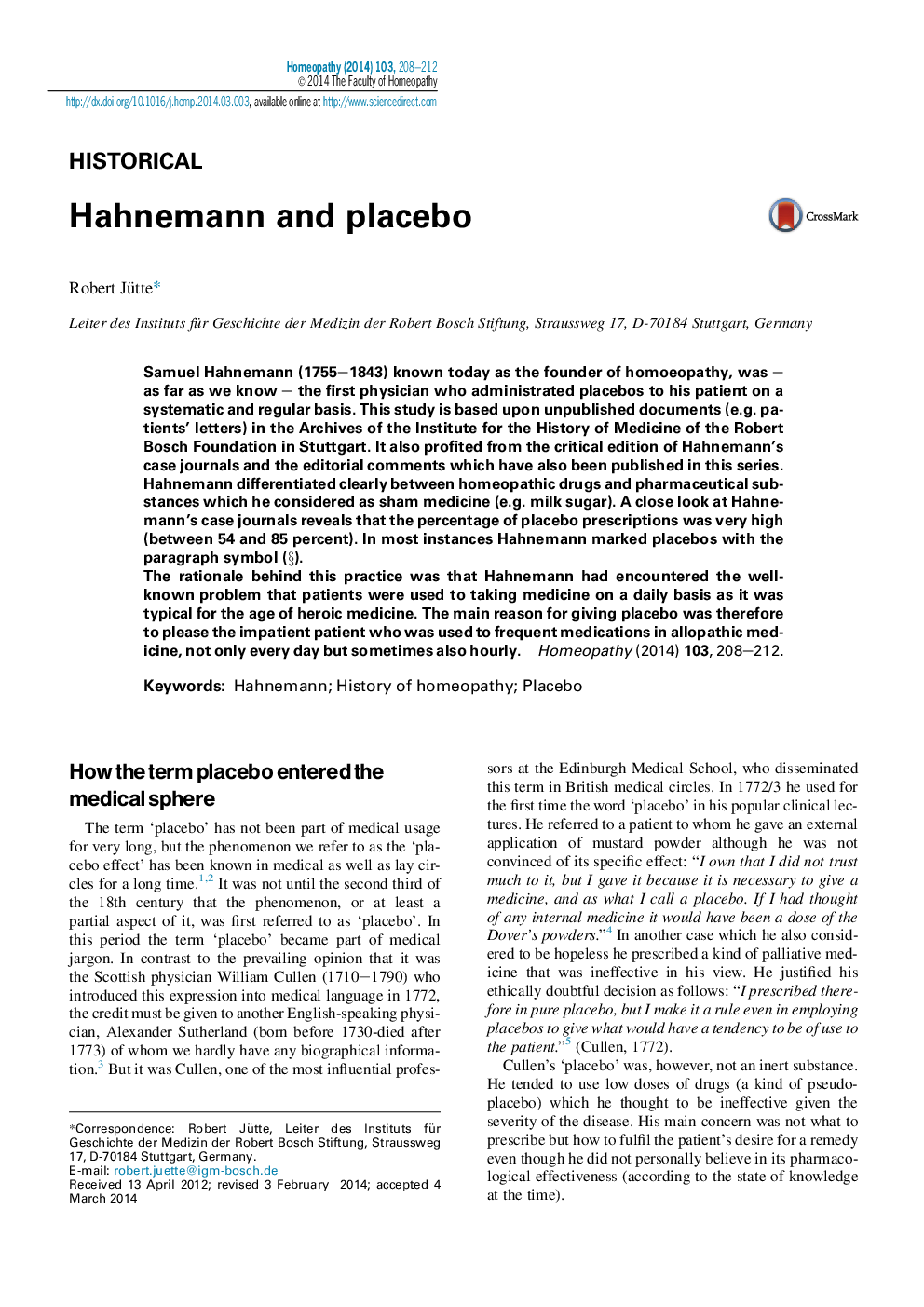| Article ID | Journal | Published Year | Pages | File Type |
|---|---|---|---|---|
| 2629958 | Homeopathy | 2014 | 5 Pages |
Samuel Hahnemann (1755–1843) known today as the founder of homoeopathy, was – as far as we know – the first physician who administrated placebos to his patient on a systematic and regular basis. This study is based upon unpublished documents (e.g. patients' letters) in the Archives of the Institute for the History of Medicine of the Robert Bosch Foundation in Stuttgart. It also profited from the critical edition of Hahnemann's case journals and the editorial comments which have also been published in this series.Hahnemann differentiated clearly between homeopathic drugs and pharmaceutical substances which he considered as sham medicine (e.g. milk sugar). A close look at Hahnemann's case journals reveals that the percentage of placebo prescriptions was very high (between 54 and 85 percent). In most instances Hahnemann marked placebos with the paragraph symbol (§).The rationale behind this practice was that Hahnemann had encountered the well-known problem that patients were used to taking medicine on a daily basis as it was typical for the age of heroic medicine. The main reason for giving placebo was therefore to please the impatient patient who was used to frequent medications in allopathic medicine, not only every day but sometimes also hourly.
